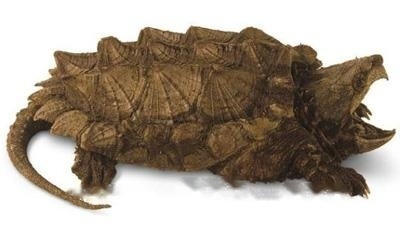
Snapping turtle
Real snapping turtles look like crocodiles fish, Set turtle and crocodile in one, so called true snapping turtle. Its head is relatively thick and cannot be completely retracted in
English name: Narrow-banded krait
Silver Ring Snake (Narrow-banded krait) is also a venomous snake. After being bitten by this kind of snake, there is usually no pain, but drowsiness. The whole body of the silver ring snake is arranged with white rings and black rings on the back, the white ring is narrow, the tail is slender, and the body length is about 1 meter.
Chinese name: Silver Ring Snake
Chinese alias: white-banded snake
English name: Narrow-banded krait
binomial: Bungarus multicinctus
Kingdom: Animal Kingdom
phylum: Chordate
Class: Reptiles
Order: Squamous
Family: Cobraidae
Genus: Cyclops
Species: Cork
Distribution: Southwest, South, Taiwan, Myanmar, Vietnam
Distribution area: Central China, South China, Southwest China and Taiwan, as well as Myanmar, Laos
Silver Ring Snake A venomous snake with white rings and black rings on the back of the whole body, the white ring is narrow, the tail is slender, the body length is 1,000-1,800mm, and it has anterior groove teeth. The back is black or blue-black, with 30-50 narrow stripes of white or cream yellow; the ventral surface is dirty white. The head and back are dark brown, and the larvae have light-colored inverted "V"shaped spots on the back of the pillow. The dorsal ridge is high, triangular in cross-section, and the end of the tail is pointed. The head is oval in shape, indistinguishable from the neck, with typical 9 large scales on the dorsum, no cheek scales, a row of ridge scales in the middle of the back, enlarged and hexagonal; the lower caudal scales are single row.
Silver Ring Snake It is nocturnal, especially in the hot and humid nights, but it is also seen that in early summer, when the temperature is 15—20℃, when the weather is clear, it will come out during the day to bask in the sun. Silver ring snakes have a milder temperament, and generally rarely bite people actively, but they will also suddenly attack and bite people when the eggs are hatched or when they are disturbed.
Silver ring snakes will prey on loach, eelfish and frogs, also eat a variety of fish, rodents, lizards and other snakes.
Ringsnake Feeding Knowledge
The Silver Ring Snake has a timid personality and will respond accordingly when it is frightened. Whether it is a novice or an enthusiast, you should be careful, because the snake It will also attack the same kind under the same roof with itself, so it is not recommended to mix it.
There are a variety of parasites in the silver ring snake. Mild parasitic diseases will weaken the body and cause other diseases, and serious ones often lead to death.
During the incubation period, the temperature of the silver ring snake is preferably 20-27°C, and the relative air humidity is 50%-70%. Incubation period is 42 days.
At the beginning of the month, the snake needs a lot of nutrients to supplement the body. In November, before the snake enters the sting, it needs to accumulate nutrients to prepare for hibernation. In these two months, try to feed as much and full as possible. It is a critical stage in raising snakes. The optimum temperature for snakes is 18-28°C. Below 10°C, they enter hibernation, and below 5°C, they will freeze to death. Therefore, pay attention to heat preservation in winter, cover the snake room with 20 cm thick straw, seal the access door, and put hay, paper scraps, and sacks in the snake room.
Silk Ring Snake Feeding Tips
Like many snakes, silver ring snakes are carnivores, especially live animals. In the wild, they often prey on loach and eelfish and other small animals, including other snakes. Hobbyists should choose to feed the snake at night, no need to feed every day, just 1-2 times a week, preferably the day after defecation.
Newly arrived snakes should have a two- to three-day acclimation period. In terms of food, suckling rats are the first choice, followed by loach. Silver ring snakes are very nervous and should not be disturbed within 2 days after they are full, otherwise the probability of vomiting is very high. After eating, different foods can be provided, such as eels, small snakes, frogs, etc.
The best kind of snake is a young snake of about 500 grams, and the ratio of female and male is 10:1. Snakes do not eat much. One snake eats about 1 to 2 kilograms a year, mainly feeding on leeches, eels, and loaches. Put a small amount of eel, loach, etc. into the feed pond every evening before the silver ring snake emerges from the nest, and the amount of feed is subject to consumption. Generally, 50 grams of small loach can feed 10 snakes for one meal. Usually, more frogs can be caught and put into the snake farm, so that the snakes can prey freely. Snakes only eat live food, not dead food. Dead objects in the pool should be fished out. In early May, snakes need a lot of nutrients to supplement their bodies. Before snakes enter stings in November, they need to accumulate nutrients to prepare for hibernation. In these two months, you should try to feed as much and full as possible, which is the key stage of raising snakes. The optimum temperature for snakes is 18-28°C. Below 10°C, they enter hibernation, and below 5°C, they will freeze to death. Therefore, pay attention to heat preservation in winter, cover the snake room with 20 cm thick straw, seal the access door, and put hay, paper scraps, and sacks in the snake room.